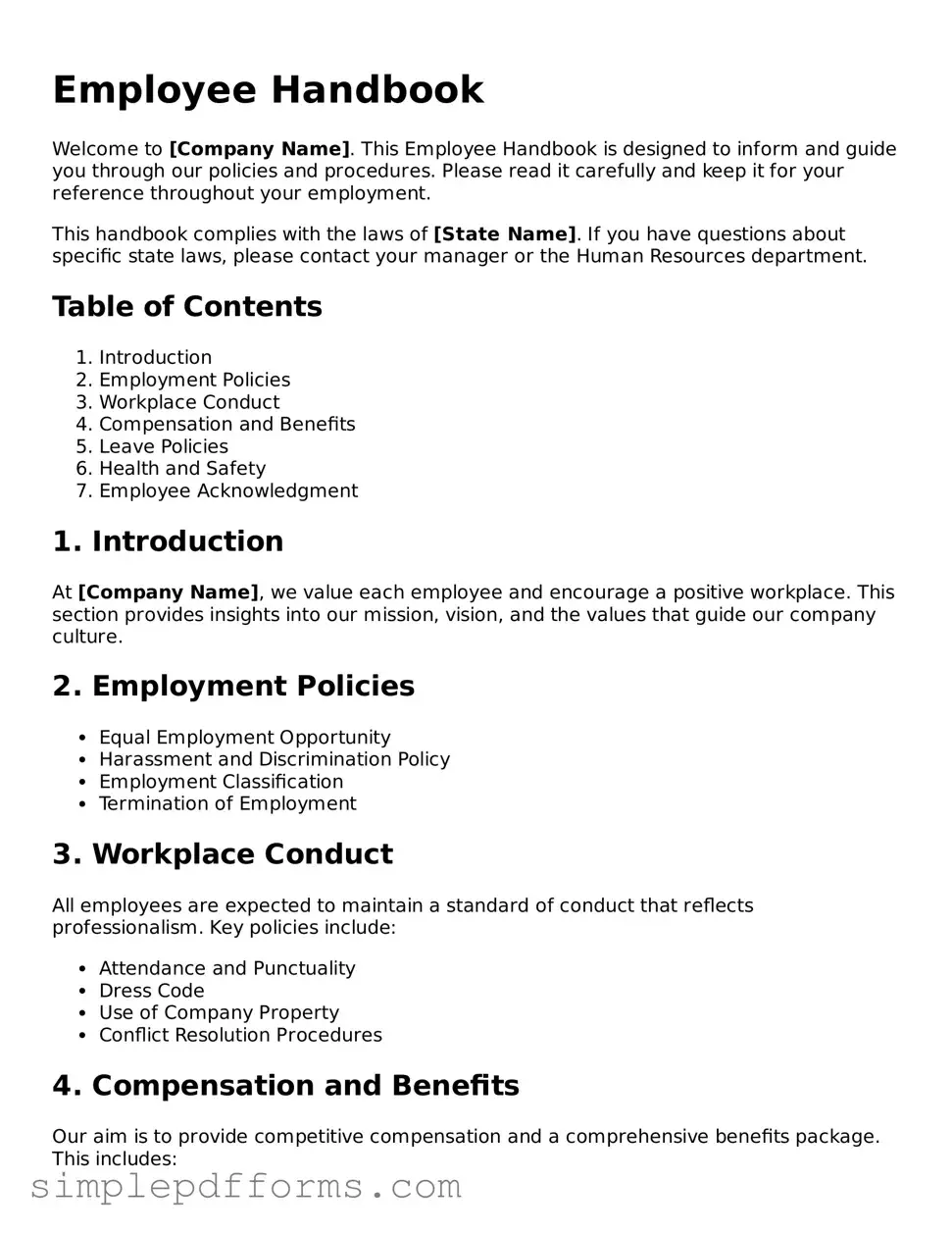Employee Handbook
Welcome to [Company Name]. This Employee Handbook is designed to inform and guide you through our policies and procedures. Please read it carefully and keep it for your reference throughout your employment.
This handbook complies with the laws of [State Name]. If you have questions about specific state laws, please contact your manager or the Human Resources department.
Table of Contents
- Introduction
- Employment Policies
- Workplace Conduct
- Compensation and Benefits
- Leave Policies
- Health and Safety
- Employee Acknowledgment
1. Introduction
At [Company Name], we value each employee and encourage a positive workplace. This section provides insights into our mission, vision, and the values that guide our company culture.
2. Employment Policies
- Equal Employment Opportunity
- Harassment and Discrimination Policy
- Employment Classification
- Termination of Employment
3. Workplace Conduct
All employees are expected to maintain a standard of conduct that reflects professionalism. Key policies include:
- Attendance and Punctuality
- Dress Code
- Use of Company Property
- Conflict Resolution Procedures
4. Compensation and Benefits
Our aim is to provide competitive compensation and a comprehensive benefits package. This includes:
- Pay Schedule
- Overtime Policy
- Health Insurance
- Retirement Plans
5. Leave Policies
Employees are entitled to certain types of leave. Familiarize yourself with the following:
- Sick Leave
- Vacation Policy
- Parental Leave
- Family and Medical Leave Act (FMLA)
6. Health and Safety
The health and safety of our employees is a top priority. We adhere to all relevant health regulations. Important safety protocols include:
- Emergency Procedures
- Reporting Workplace Injuries
- Safety Training
- Workplace Inspections
7. Employee Acknowledgment
Please sign below to acknowledge that you have received and reviewed this Employee Handbook.
__________________________ [Employee Name]
__________________________ [Date]
